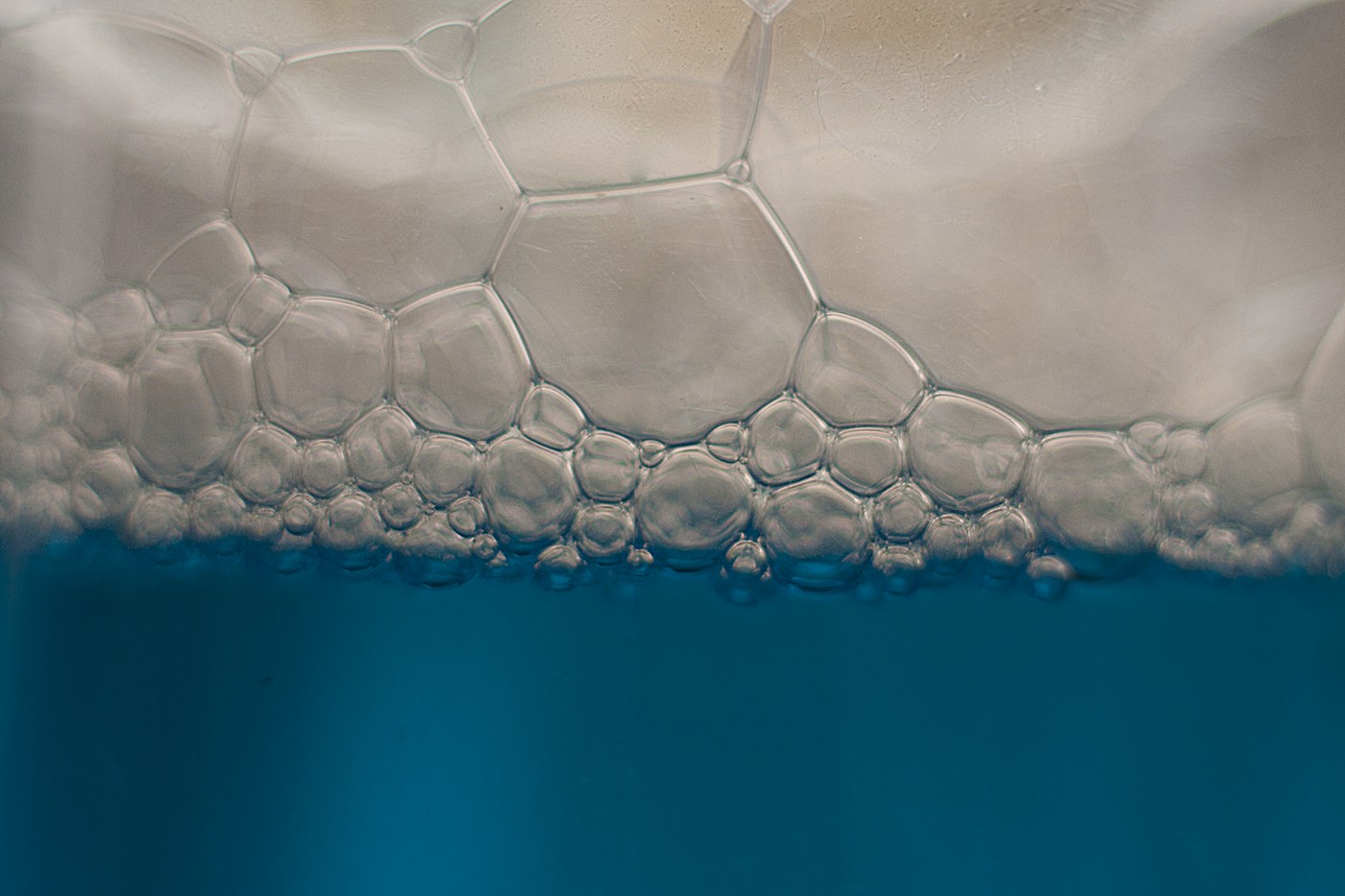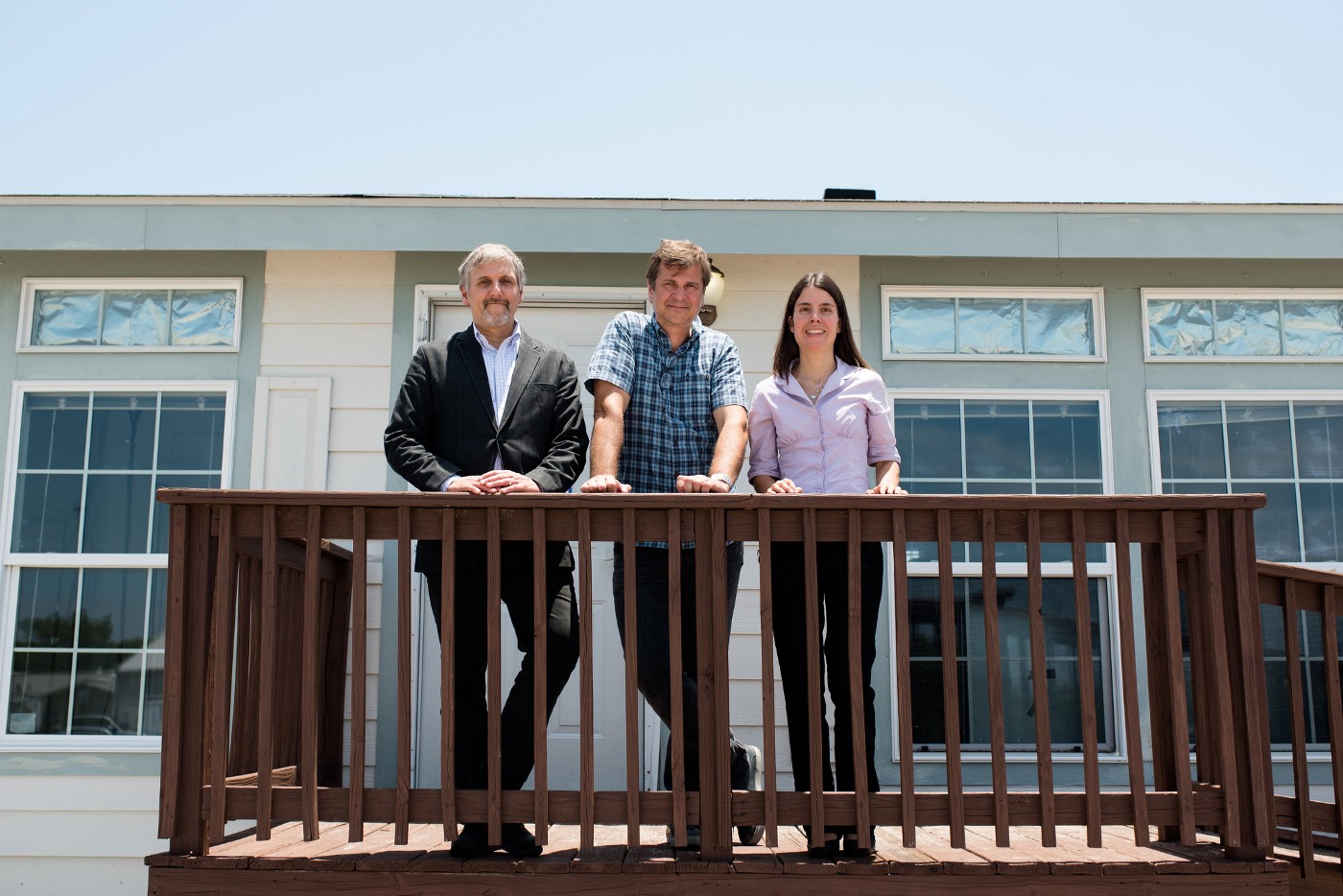
Something really important is happening at the University of Texas at Austin this month.
Scientists from 13 different universities in the U.S. and Canada have descended upon a small house at the J.J. Pickle Research Campus and have brought with them the most sophisticated air pollution measurement equipment on earth to study indoor air quality as part of a major research effort known as HOMEChem (House Observations of Microbial and Environmental Chemistry). They’re here to study the chemistry that occurs inside homes when people cook, clean, or use scented personal care products. In the process, they will also glean valuable information about outdoor pollutants — such as those from nearby highways — once they enter a home through windows, doors, and ventilation systems.
Nothing like HOMEChem has ever been done before.
There is a compelling reason to research the quality of air in our homes. On average, Americans live to be 79 years old and spend 70 of those years inside buildings. What’s more, we spend 50 of our 79 years inside our homes. A large majority or the air pollution that we inhale during our lifetimes comes from the air we breathe while we’re indoors, and that’s even true for air pollution that originates outside and then makes its way in.
Pollutants of indoor origin are released by building materials, such as flooring and paint; consumer products such as cleaners, candles, and fragrances; and from human activities. But pollutants are also formed by complex chemical reactions that occur in the air and on surfaces.
It is this latter group of pollutants, sometimes referred to as secondary pollutants because they are not specifically emitted by any indoor sources, that makes HOMEChem unique and important. These pollutants are created as a result of the hundreds of simultaneous chemical reactions that occur when one substance comes into contact with another.

Here’s why this matters: If you look at a bottle of your favorite household cleanser, you’ll see a list of chemicals that the manufacturer combined to create that product. Or maybe you make your own cleanser from common household ingredients. Either way, some of those ingredients are harmless, some might not be. But we know what they are — until you spray or apply the cleanser. At that point, those ingredients come into contact with molecules already on your counters, on your floor, even on your skin and in the air, and they can combine to create new chemicals that can be far more dangerous than what’s in the bottle.
A good example is bleach and ammonia. If you were to combine those (don’t!), you’d get an extremely toxic gas mixture containing chlorine and toxic chemicals such as chloramine and hydrazine. Many people know this, of course, and wisely avoid mixing cleansing products that contain those two ingredients. Our HOMEChem work is similar to this: We want to find out what other (possibly dangerous) chemicals are formed all the time in home environments that even the best scientists aren’t aware of yet. It’s challenging work because these chemical reactions are often very difficult to measure but may be important contributors to human health and productivity and may also damage indoor materials, from works of art to air conditioning units.
Proudly, our UT Austin HOMEChem team is led by three Planet Texas 2050 researchers from the Cockrell School of Engineering. This work is important to our grand challenge because as our state’s population rapidly grows, most Texans will live within 200 meters (a couple of blocks) of freeways or other busy roadways. Many of the pollutants emitted from traffic enters buildings and becomes part of the indoor chemistry we inhale, including neurotoxins and cancer-causing chemicals like benzene. Furthermore, increasing temperatures and even rainfall amounts can affect the extent and nature of the indoor chemistry in our homes. So, in many ways, HOMEChem will tell us a little bit about the future of what Texans will be breathing.
This is critical because indoor chemistry has not been studied in depth in the past. First, regulations often drive environmental research — for example, studying outdoor air pollution or drinking water — but there are very few regulations related to indoor air quality (effectively none outside of some occupational standards in the U.S.). Second, it’s easier to regulate pollution when it affects large numbers of people all at once. Poor air quality in Houston affects everyone who lives in Houston. But indoor air quality is different.
Each building is, in effect, its own atmosphere. Some of these atmospheres are much more contaminated than others, but finding them tends to be on a case-by-case basis when a homeowner or schoolchildren become sick.
And even then, states are ill-equipped to help anyone unless they get sick in a state building. Homeowners are on their own and are generally not very well educated about the complexities of indoor air quality, and certainly not about the chemical reactions that occur indoors. These factors have led to a major research void as compared to other environmental issues, and there is a scarcity of information available to help homeowners deal with related problems when they arise.

It has taken a non-profit foundation, the Alfred P. Sloan Foundation, to recognize the importance and need for more knowledge related to indoor atmospheric chemistry. The foundation has embarked on a 10-year initiative called the Chemistry of Indoor Environments (CIE) to push the boundaries of what has already been learned about indoor air chemistry by those of us who have struggled to work in the field for decades with limited resources.
The CIE is already proving valuable, and HOMEChem has been a major part of its success. Mountains of data are being generated that will be mined for years, used to design future studies and calibrate and evaluate sophisticated mathematical models of the chemistry that happens inside homes and why. Answering the “why” will ultimately lead to practical outcomes that allow builders to construct healthier homes and to help people quench harmful chemistry in their own houses.
This will take a while to accomplish, but this month marks the beginning of that work.

